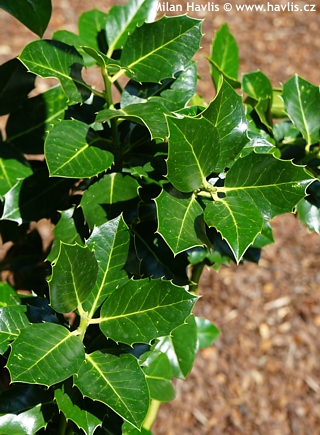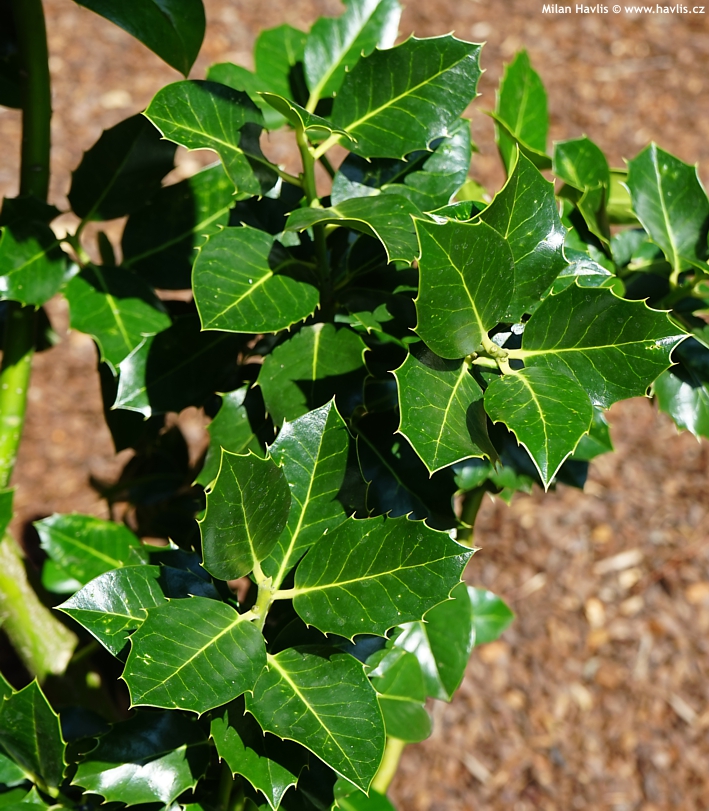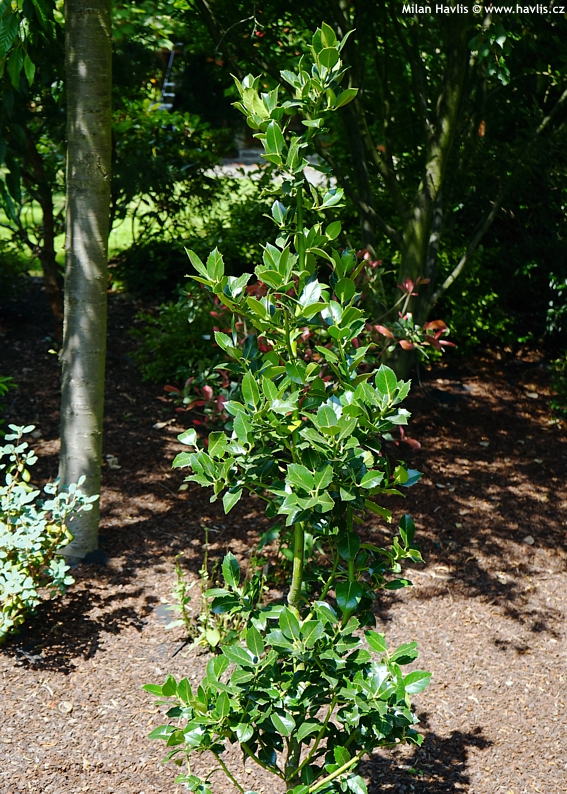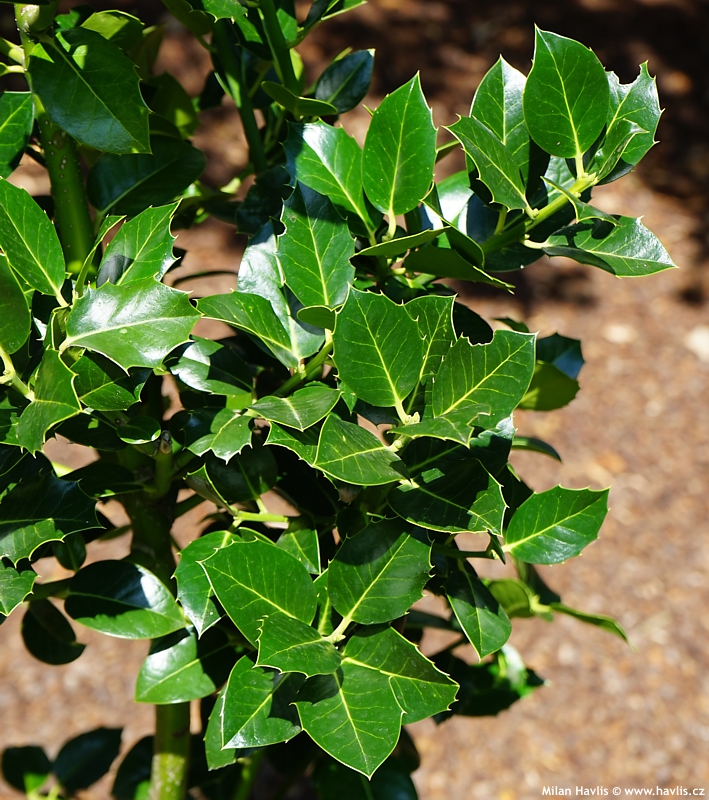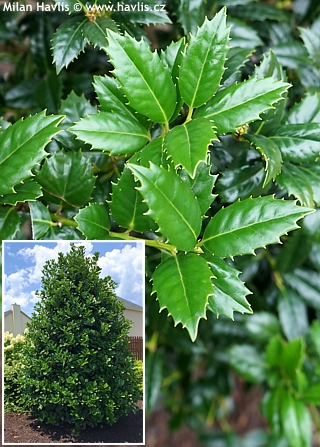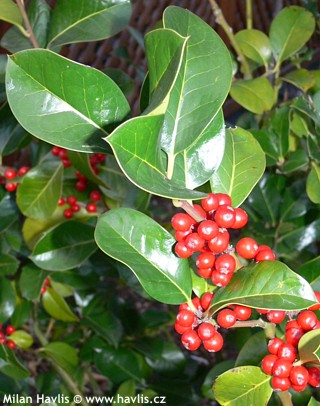Ilex x altaclerensis 'BALEARICA' Highclere holly - female
size/type
small tree,taller shrub
usual height
3-5m
usual width
1,5-2m
leaves
evergreen broadleaf
colour of leaves
location
full to partial sun
soil type
acidic (peaty) to neutral
soil moisture requirements
evenly moist (dislikes drought)
USDA zone (lowest)
7 (down to -23°C)
winter protection
for zone 5+6

for zone 7

categorized
Ilex
Hollies are among the most common evergreen and native plants of milder parts of Europe with high humidity – British Isles, north France, Benelux countries, and milder parts of north Germany. Various species form trees, shrubs, or thickets. They are absent from natural Central European landscape but can be cultivated without problems. They are renowned for glossy, often prickly leaves, and multiple variegated forms have been selected for garden cultivation. Highclere holly is a hybrid between ilex aquifolium and ilex perado, probably from England. All varieties of this hybrid are quite unique and have almost spineless, large leaves and often vigorous growth.Description of the plant:
Balearica is another large-leaved Highclere holly. It has dark green and highly glossy leaves that are broadly ovate, evergreen, leathery, shallowly spined at margins, and decorated with conspicuous light green veins. New foliage emerges mahogany red to purple red. Being a female plant, it produces scarlet orange or red berries in autumn if pollinated by a male holly growing nearby. They are not edible nor poisonous but contain saponins which cause discomfort if eaten.It grows fast under good growing conditions, 30-40 cm per year. The habit is rather slender, columnar to narrowly pyramidal with strong, upright branches. Pruning is possible in early spring. Midsummer pruning is good for shaping but with Balearica’s growth rate it does not make much sense.
Grow hollies in moist but well-drained, fertile soil. They can take periods of drought once established but dislike compacted, heavy-clay-based soils that turn very dry in summer, and often too wet in winter. If your soil is such, dig the planting hole only half the depth of the root ball, refine what you dig out and mix well with quality substrate of highly acidic level (low pH value). Using this mixture make a gradual slope from the stem to the original ground level and tamp it down as much as you can. Your root ball should not look like a molehill but more like a wide and flat mound. Mulch it well and keep watering it more often as it will be more prone to drying out as opposed to most common flat-in-the-ground transplanting. Hollies do best in full sun but can also grow in shade where they will lose their compact habit. Before and during winter when the soil is not frozen provide good watering. Hardy to min. -24 °C (USDA zone 6) and trials for better hardiness are ongoing.
Last update 28-12-2020
QUICK PRICE OVERVIEW
CURRENTLY SOLD OUT












